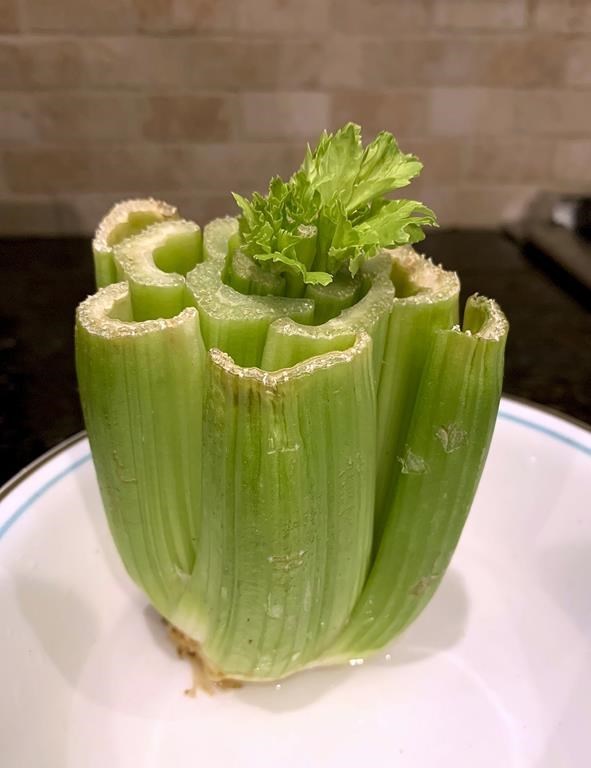Gardening naturally lends itself to reusing and recycling -- just think about compost and last year’s seed trays. So if there’s a way to reduce trash while saving money on produce, you can count me in. And one of my favorite ways to do both is to regrow vegetables from kitchen scraps.
Instead of throwing away or composting the bottoms (or tops) of vegetables when preparing them, you can grow them into leafy greens and other tasty tidbits right on your windowsill.
Before I go any further, it’s important to point out that these methods aren’t likely to produce plants that will grow well in your garden, so I don’t recommend replacing your seedlings in this manner. But they are likely to yield a side dish or two, and you can never underestimate the value of a fun project.
General tips: Scraps will grow best in a sunny spot. Use lukewarm water, and replace it every day or two to avoid the growth of bacteria. Don’t worry if the submerged portion of your cuttings becomes a bit slimy, but if the whole thing starts to turn brown, toss it in the compost pile and start over.
BEETS
My favorite thing about beets is that one plant provides two sides dishes – the tuberous root and the tasty greens. Although you can’t regrow a beetroot indoors from a cutting, you can certainly generate more leafy greens: Cut off the top 1 1/2 inches from a beetroot and place it cut-side down in a dish that contains just enough water to keep the sliced end submerged. New leaves will sprout from the top within a few days, and you can start harvesting them in a couple of weeks. (This method also works with parsnips and turnips).
CELERY
Cut 3 inches off the bottom of a head of celery, then slice a sliver off the very bottom of the 3-inch segment. Place it right-side up in a shallow container and pour in 2 inches of water. New growth will sprout from the center in just a few days.
SCALLIONS AND LEEKS
Trim the entire white portion off the bottom of a leek or scallion stalk, then place it root-side-down in a jar or glass holding an inch of water. If the stalk outgrows the jar, move it to a larger one. New growth will be harvestable in a couple of weeks.
ROMAINE LETTUCE
Cut 3 inches off the bottom of a head of romaine lettuce, then remove its outermost leaves. Place the 3-inch “heart” in a shallow container to which you’ve added one-half inch of water. Within a week, a sprout will emerge from its center. As it grows, it’s normal for some of the heart’s outer leaves to turn brown. Remove them. When the center growth is large enough for a salad (or sandwich), trim it off and enjoy – then wait for more to grow.
—-
Jessica Damiano writes regular gardening columns for The Associated Press. Her Gardening Calendar was named a winner in the 2021 Garden Communicators International Media Awards. Her Weekly Dirt Newsletter won two Society of Professional Journalists PCLI Media Awards. Sign up here for weekly gardening tips and advice.
For more AP Gardening stories, go to https://apnews.com/hub/gardening.
Jessica Damiano, The Associated Press




